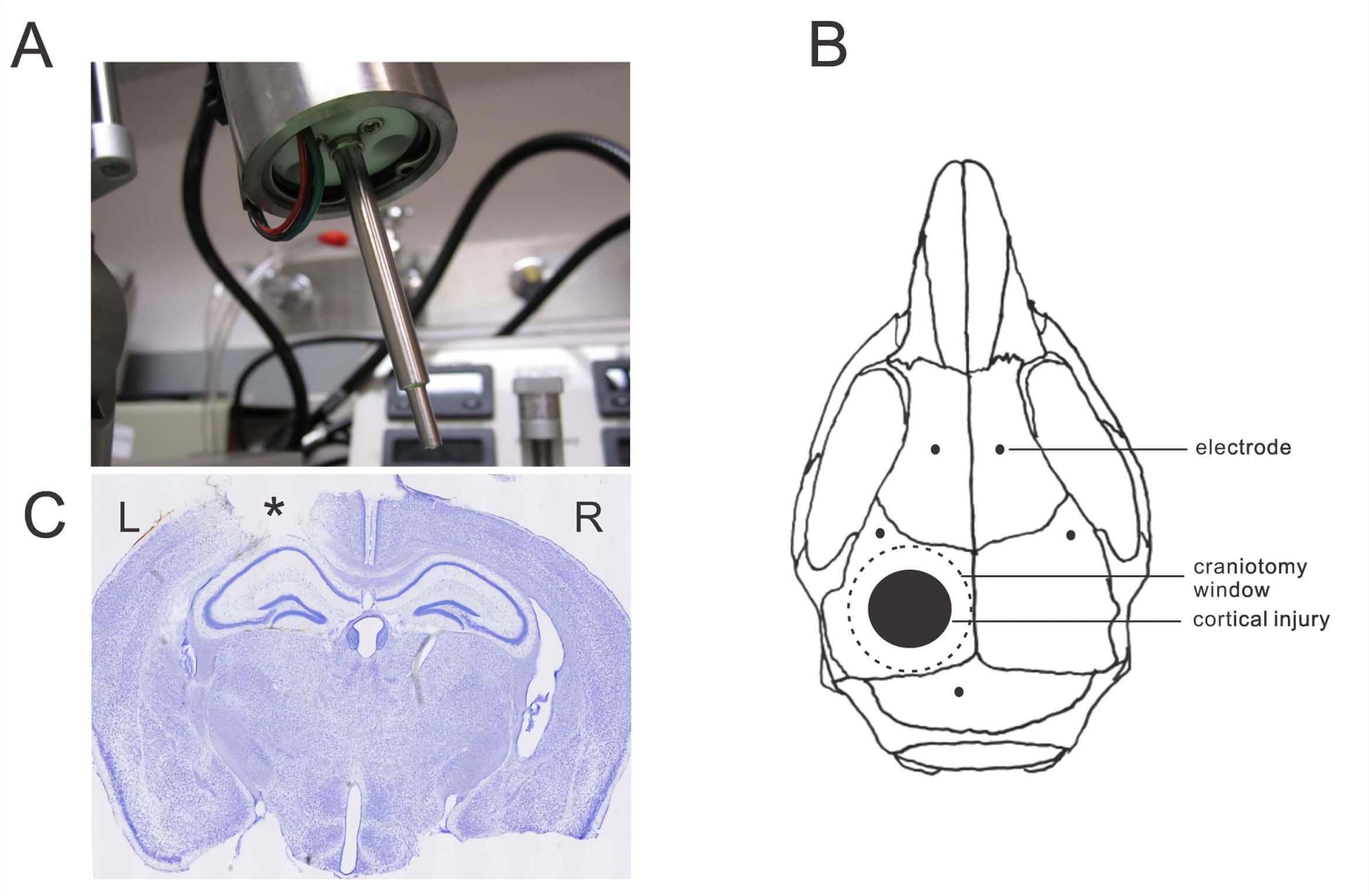Rodent Controlled Cortical Impact Injury (CCI) Model of Traumatic Brain Injury
The controlled cortical impact (CCI) is a widely-used and well-characterized model which produces clear motor and cognitive deficits that are typically seen after human TBI. Creative Biolabs employs the CCI model of traumatic brain injury (TBI) to evaluate potential preclinical therapies. Moreover, we are able to conduct different behavioral and non-behavioral parameters such as motor coordination and cognitive tasks as well as edema evaluation.
Introduction of CCI Model
Controlled cortical impact, or rigid percussion model, falls within the penetrating constrained (percussion) direct brain deformation category. CCI is the attempt to solve the limitations of the Fluid Percussion Injury (FPI) model while maintaining consistency with clinical signs and symptoms. Both models utilize a stereotaxic device to constrain the animal (rat or mouse) and ensure a repeatable alignment with the impact device. Instead of the fluid, the CCI is delivered to the intact dura via an adjustable pneumatic- or Electromagnetic- driven piston (impactor) of variable diameter, thus providing a more localized injury.
 Fig.1 Controlled cortical impact (CCI) injury model in mice. (A) Impactor tip of an electromagnetic CCI device. (B) Schematic diagram of sites of craniotomy, cortical injury, and EEG electrode placements. (C) Cresyl violet-stained coronal section. (Guo et al. 2013)1, 2
Fig.1 Controlled cortical impact (CCI) injury model in mice. (A) Impactor tip of an electromagnetic CCI device. (B) Schematic diagram of sites of craniotomy, cortical injury, and EEG electrode placements. (C) Cresyl violet-stained coronal section. (Guo et al. 2013)1, 2
The impactor is mounted to an adjustable ruled crossbar that can be rotated to regulate it at different angles. In addition to the adjustable diameter and depth, the velocity and dwell time of the impactor are adjustable. Depth and velocity of impact correlate to the pathological severity of the injury. The CCI model produces a pronounced cortical contusion and subarachnoid hemorrhage, unlike many of the other models. The deficits caused by CCI models have been found to mimic neurobehavioral and cognitive deficits, as they are typically seen after human TBI, such as depression, anxiety, impairment of spatial learning and memory, and multiple motor deficits.
Features of CCI Model
- A key feature of CCI is that the injury parameters (e.g., depth, velocity, and dwell time) can all be controlled for to produce a broad range of TBI severities and well as closed head impact by impacting the intact skull.
- The advantages of CCI models include the ability to directly control physical damage, reliable deficits, and no rebound concussive events.
- A craniotomy (surgical opening into the skull) is needed.
- This model alleviates the controllability limitation of the FPI impact.
Assessments
To assess the injury severity level, there are multiple outcome measures that can be used (e.g., neurological, physiological, neurobehavioral, histological techniques). Common outcome measures include the beam balance motor test, cognitive performance in the Morris Water Maze, gait analysis, acute edema in the brain, and histological measures such as the cortical lesion volume. Briefly, Creative Biolabs provides assessments including but not limited to:
- Body weight
- Behavioral tests (e.g., motor function, cognition, social behavior)
- Histology analysis (e.g., cortical lesion volume)
- Magnetic resonance imaging (MRI) and magnetic resonance spectroscopy (MRS)
Additionally, we provide other TBI rodent models that you may be interested in:
The comprehensive list of rodent neurological disease models is placed below for your review. Please click the links for more detailed description of each model:
Recognized as a key partner in drug efficacy studies, Creative Biolabs provides clients with high-quality services bringing many years of scientific expertise and state-of-the-art facilities. Our team of experts is available to assist our clients with the design of study plans and study-specific protocols. For more information on our traumatic injury models please contact us or send us an inquiry below.
References
- Guo, D.; et al. Rapamycin attenuates the development of posttraumatic epilepsy in a mouse model of traumatic brain injury[J]. Plos One. 2013, 8(5): e64078.
- under Open Access license CC BY 4.0, without modification.
For Research Use Only.
